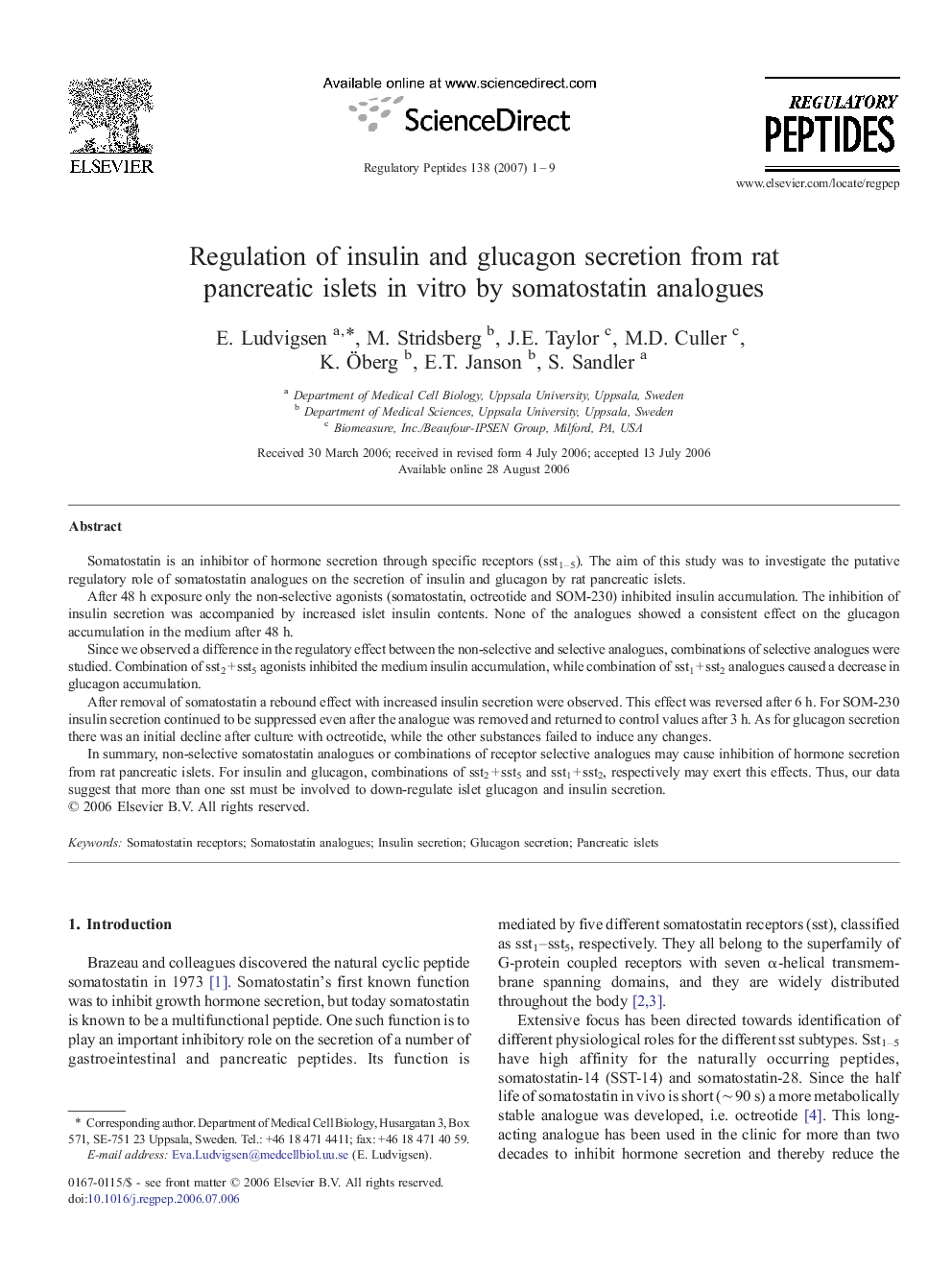| Article ID | Journal | Published Year | Pages | File Type |
|---|---|---|---|---|
| 2023380 | Regulatory Peptides | 2007 | 9 Pages |
Somatostatin is an inhibitor of hormone secretion through specific receptors (sst1–5). The aim of this study was to investigate the putative regulatory role of somatostatin analogues on the secretion of insulin and glucagon by rat pancreatic islets.After 48 h exposure only the non-selective agonists (somatostatin, octreotide and SOM-230) inhibited insulin accumulation. The inhibition of insulin secretion was accompanied by increased islet insulin contents. None of the analogues showed a consistent effect on the glucagon accumulation in the medium after 48 h.Since we observed a difference in the regulatory effect between the non-selective and selective analogues, combinations of selective analogues were studied. Combination of sst2 + sst5 agonists inhibited the medium insulin accumulation, while combination of sst1 + sst2 analogues caused a decrease in glucagon accumulation.After removal of somatostatin a rebound effect with increased insulin secretion were observed. This effect was reversed after 6 h. For SOM-230 insulin secretion continued to be suppressed even after the analogue was removed and returned to control values after 3 h. As for glucagon secretion there was an initial decline after culture with octreotide, while the other substances failed to induce any changes.In summary, non-selective somatostatin analogues or combinations of receptor selective analogues may cause inhibition of hormone secretion from rat pancreatic islets. For insulin and glucagon, combinations of sst2 + sst5 and sst1 + sst2, respectively may exert this effects. Thus, our data suggest that more than one sst must be involved to down-regulate islet glucagon and insulin secretion.
